Chris Gory - The Evolution of Self-Adhered Roofing - PODCAST TRANSCRIPTION
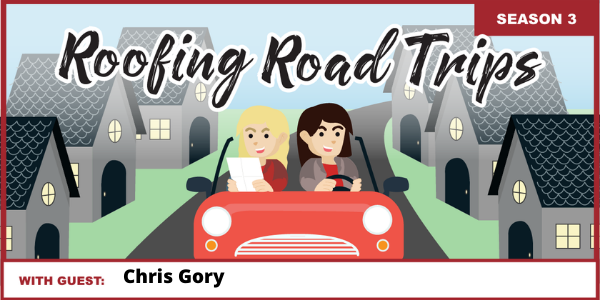
Editor's note: The following is the transcript of an live interview with Chris Gory. You can read the interview below or listen to the podcast.
Speaker 1:
Welcome to Roofing Road Trips with Heidi. Explore the roofing industry through the eyes of a longterm professional within the trade. Listen for insights, interviews, and exciting news in the roofing industry today.
Heidi Ellsworth:
Hello and welcome to another Roofing Road Trips. This is Heidi Ellsworth with Roofers Coffee Shop, and I am here today, virtually road tripping across the country from Oregon to Florida. One of my favorite places besides Oregon is Florida, and especially because we have such amazing roofing friends there.
And one of my long-term friends is Chris Gory. I think we both met probably when we started our careers in roofing. I mean, it's been that long. Chris is with Polyglass, another one of our favorite companies. They are doing such innovative manufacturing, roofing. So I am thrilled to be visiting with Chris Gory today. Chris, welcome to the show.
Christopher Gory:
Heidi, it is great to be here and it's great to be talking to you, and seeing you. And it's been way too long, way, way too long.
Heidi Ellsworth:
Way too long. It's a little virtual still, but man, we'll almost be seeing each other in person pretty soon. So Chris, I would love for you to tell everyone just a little bit about yourself and about what you're doing at Polyglass? But I know, you got to share a little bit of the story too, of... You are a roofing family. I worked with your dad when I first got into roofing, and you've just had such a spectacular career. So share that with everybody.
Christopher Gory:
Yeah, I appreciate it. I am, I'm third generation in this business. It actually started with my grandfather after World War II...
Heidi Ellsworth:
Wow.
Christopher Gory:
Him and his brothers getting into the roofing business, eventually starting a tile manufacturing company called Gory Tile, which was at one point, probably the largest concrete tile manufacturer in the United States.
They went from there into distribution. My father, he's been in it straight out of high school, was in the business. And then the last thing I ever thought I would be doing with my life is being in the roofing business, but I'm here and I love it. I've been in the business now for over 20 years.
I've worked as a tech rep for a fastener company. I've been in sales. I've been in distribution. I've worked for one of the largest single ply manufacturers in the country. And I've spent my last nine years with Polyglass. And currently, I'm the national low slope manager for Polyglass, covering all of North America.
And it's just been a joy and quite a ride to be with a company that is just constantly concerned about innovating for the contractor. So it's right up my alley and thrilled to be with them.
Heidi Ellsworth:
I love it. Polyglass was one of the first companies I worked with, and in my career also, right after Malarkey, I worked with Polyglass for many years. I love the family, the company, your products. It's always so inspirational, and I think it would be really good if you could maybe share just a little bit about that Polyglass history.
How they came to the US, what they've done, the innovation? I would love for the audience to hear that.
Christopher Gory:
Yeah. And it's great for me to be coming from a roofing family into another roofing family. Polyglass was started by a couple of contractors, some brothers, the Zanchetta brothers. This was back in mid-1960s, and they were roofers and they wanted to find a better way to roof. Everything was mop, and felts, and hot asphalt.
And at that time, this APP palmer was out there. And so they, with a kettle in their backyard, started messing around and trying to modify asphalt into an APP [inaudible 00:04:14]. And to this day, we still have a plant in Italy with four lines there, servicing all of Europe. And then it was in the eighties and they start venturing into the United States, and they finally bought a home in 1992-93, no, I'm sorry, 91-92 in Fernley, Nevada.
And that was the first plant they opened up. And to think they went from this one plant where they maybe have a handful of truckloads a week until we're... Now, we have five plants, one in Nevada, one in Pennsylvania, one in Florida, one in Arizona, one in Texas. They are just continuing to grow, and it's been a great ride for them. We were purchased by Mapei in 2008, which was really good for us because the Mapei family, they are heavily involved in research and they do a lot with concrete and grounding and those kinds of construction materials. So getting that innovation from that family tied into the Zanchetta family, they were scientists themselves, has just helped us tremendously. And now, I think we have something in the realm of 15 to 16 R&D scientists, all with PhDs, most of them with multiple PhDs, creating new products every day. So it is a cool environment to be in if you are a roofing junkie and looking for the next big thing. So it's fun.
Heidi Ellsworth:
I love it. I love it. I was actually working with Polyglass around 1998, 99, helping them to come into the US, some of the coolest nicest people ever. And I've been able to watch this with what... I love how you said going from a family business to a family business, because it really is. And then whether you're related or not, it's a big family. But they were really... Polyglass really was the first one to come out with... And I was there, I was watching it when Polystick came out and all of the self-adhered commercial systems. Tell us just a little bit about that self-adhered technology. And then we're going to get into some numbers, which I'm really excited about, but tell us a little bit about how that came onto the market.
Christopher Gory:
So self-adhered, we think of it as a newer technology in roofing, but it's actually been around since the 1960s. In Europe, they were doing self-adhered waterproofing, and that kind of evolved in through the sixties. And then in the seventies in Europe, they started using it as an underlayment, self-adhered. Now, these are all non-reinforced membranes. It was Polyglass in the late nineties, like 96, 98, is when they came up with the first reinforced self-adhered membrane here in the US. And then in 2003, they patented a system called a Adeso, which is a unique technology to self-adhered. And from there on, it just took off.
One of the things that really helped quite frankly, was in 2005, 2006, you had a bunch of hurricanes hit Florida. Asphalt went through the roof, it was hard to get. Self-adhered were doing okay in that underlayment world. Not great, but they were doing okay. But then all of a sudden, these contractors caught onto the fact that one, the price was stable, and two, they can dry in a whole bunch of roofs a heck of a lot quicker. And that really took self-adhered to the next level. And from there on, it's just been... Now, it's just accepted in the commercial roofing world. It has really jumped. The technology has evolved and it's constantly getting better every day, more manufacturers are getting into it and really buying into what self-adhereds can do for a roofing contractor.
Heidi Ellsworth:
Yeah, it just makes so much sense, especially when we're talking about labor shortage. Like you said, now we're back into the material shortages, price increases, and the self-adhereds are still doing what they need to do and help crews do it faster, which is so important.
Christopher Gory:
Yeah, I'll tell you... It's one of the biggest parts, is the labor savings, the consistency. When it comes to mod-bit and you talk to guys that torch down mod-bit. [Inaudible 00:09:10] Torching is an art, and it really kind of is. I mean, these guys, the guys that can really torch well, it's a unique talent. But those guys, they're going away slowly but surely. And so that's where self-adhered brings back that consistency of a good roof, of a good install. Easier to learn. There's still techniques. It's not magic, self-adhered's not magic. And I think some contractors get a little scared because it just seems too easy, but if you're not trained properly and you're not doing the right things to learn it, you can have some issues. [Crosstalk 00:09:50] so important, just like any other membrane that's out there. You got to be trained to really know what you're doing.
Heidi Ellsworth:
Training is so important. And I know Polyglass has been committed to training for years. Again, I was part of it early on and saw what they were doing in the training centers and what they put together. Through all of your efforts, the self-adhered market has just continued to grow. And I know you have some data points and some numbers that really are showing the growth of self-adhered in commercial roofing, maybe you could share some of that.
Christopher Gory:
Yeah. So this is the exciting stuff about self-adhered, and it's catching on way quicker than I think even we kind of realized. I mean, we've seen the growth in our business, but as our competitors have joined in, they're starting to see their successes in it as well, where right now, self-adhered membranes make up over 30% of all mod-bit membranes sold in the US. That's probably on the low side. I mean, the more recent numbers, it's getting closer to 40% of all mod-bit membranes.
Heidi Ellsworth:
Yeah.
Christopher Gory:
Just in the last five years alone, self-adhered cap sheets have doubled in sales, and that's industry-wide.
Heidi Ellsworth:
Wow.
Christopher Gory:
So it's the fastest growing segment in low slope roofing by percentage, but it is just really jumping off by leaps and bounds, because the technology, it's getting better and guys are trusting it. And that's the fun part.
Heidi Ellsworth:
Yeah, and in solving pain points, and in solving problems, and putting on a great roof, which at the end of the day, that's what everybody wants.
Christopher Gory:
Yeah, absolutely. Yeah. It's funny, back in 2000, I guess it has been 2000 of... I can't even remember the dates now, but Hurricane Wilma came through and the contractor in Miami-Dade County installed a 450 square roof. It was a three ply self-adhered system. It was his first really big roof that he had done with all self-adhered. And a week later, Hurricane Wilma comes through, and we had winds around a hundred miles an hour. He was a little nervous about it. I won't lie. Even I was like, "Ah, okay, here we go. Here's the first big test that I've personally seen." And that week later, he and I went up there and it was in perfect shape. I mean, it looked like nothing ever happened to it. That was his selling moment, his aha moment of, "Wow, this technology is really fantastic and it really does work."
Heidi Ellsworth:
It really works. And what we're seeing right now, the weather is just crazy everywhere. I mean, from huge heat and wildfires in the west to you've already had a couple... You had one hurricane and a couple of tropical storms. They're even seeing in the monsoons, in the straight line winds on Arizona. I just am like, "Man, it's everywhere." And so I think it's more important than ever that contractors can adopt products that they know are going to withstand that.
Christopher Gory:
Yeah. So to that point, I meet with contractors all across North America and all the way up through Canada, east to west coast in the United States. Especially when we get into a large group, I always love to ask the question, "Okay, how many of you have used self-adhered?" And more often than not, they'll raise their hands, the whole group. And then there's always a select few that said, "Yeah, well, I tried it once and it was 10 years ago or 12 years ago." And they had this one particular issue on one roof. It was the one time they tried it and they had some issues with a rainstorm, something happened, and they'll never go back to it.
This goes back to what were talking about earlier with training, how important that training aspect is. But also, the technology has gotten so much better. And I don't think there was a major issues back in 10, 12 years ago. At the time, there was questionable issues with laps and the way that technology worked. All that stuff, I can't even tell you the last time we had an issue with a side lap or an in lap. Our technology that we have, especially what we just did about three years ago, we did this... We changed the way we have our laps installed in the plant with the CLF ultra, where we're taking the bottom compound of the membrane and using that same compound on the lap itself, the side lap. And so when you combine those two, it becomes a monolithic bond, or side lap is.
Heidi Ellsworth:
Yes.
Christopher Gory:
And it's so much stronger now. We did some FM testing recently, it actually outperformed a hot map, cold-applied, and torch-applied membranes. The self-adhered lap was the strongest of all of them.
Heidi Ellsworth:
That's cool. That's awesome.
Christopher Gory:
Yeah, really exciting stuff. And so technology, I mean, if you tried it once a long time ago and you're just so not sure about it, just talk with us, talk with another manufacturer. It's come light years. And I think any of those worries that people had at one point, they don't exist anymore. We just don't have those same problems. So it's a neat time for self-adhered.
Heidi Ellsworth:
Yeah, because one of the things I was going to say is share with some... What you're seeing on adoption from contractors of using self-adhereds, but it sounds like it's pretty rapid, especially when you have stories like the contractor with the Hurricane Wilma, that is just such a testimonial.
Christopher Gory:
Yeah, a lot of contractors that use self-adhered love the base sheets. And you hear this all the time, they love to self-adhered base sheets and they love torching a cap sheet to that. And it creates this fantastic bond. And it does, it's a wonderful system. And I always kind like to say contractors love to see stuff melt, and they love to see that little bleed out on the edge of a [inaudible 00:16:21].
Heidi Ellsworth:
Yeah, yeah.
Christopher Gory:
They need to see something happen.
Heidi Ellsworth:
Yeah.
Christopher Gory:
And with self-adhered, they don't quite get that, but the technology's there. And to me, it's a testament in Canada. That's starting to become a self adhered market.
Heidi Ellsworth:
Wow.
Christopher Gory:
And they were, always been a torch SBS market. And it still is. Don't get me wrong, it's a heavy SBS torch market. But some of the largest contractors in Canada are moving to self-adhereds because they've had too many issues with torching. And to me, that's a big testament. When you have these guys that are incredibly trained and incredibly detailed to where now, they're loving self-adhered. And we have some cold temperature options now, which extend their roofing season. And I can't believe, I'm stunned by the success we're having in the northern parts of the country, and into Canada, with self-adhered membranes.
Heidi Ellsworth:
That's great. And when you really look at that, when you're going from Miami, the heat and humidity of Miami with great success, all the way up to Canada, that really shows the versatility of the product and of the Adeso technology. And that's the part I always get excited about, because I've been seeing, you have had so many new technologies that have been announced lately, Velociflex, also one of my favorites is your Burn Shield Technology. So maybe Chris, just tell us a little bit about first, about some of the new technologies around self-adhered that have been announced lately. And then I want to dive a little bit deeper into a couple of those.
Christopher Gory:
Sure. So one was that CLF ultra that I just talked about, which was that side lap and how much better that bond has become. It's just a whole... It's a game changer for self-adhered cap sheets. Polarply, like I just kind of mentioned, in Canada or the Northern part of the US, we're extending that roofing season. This is a product that can be applied at negative, or I'm sorry, 25 degrees Fahrenheit, all the way up to 65 degrees Fahrenheit. So it works wonderfully. Actually, we really start ramping up manufacturing of that product in September.
And we started manufacturing about three years ago, and each year, I mean, the sales are just growing dramatically with that product, because again, it just extends that work season for those contractors with self-adhered. So that's been a really nice advancement for us on that technology.
As far as what we're seeing in the future, future technologies, are one that we just released and that you just talked about was our Burn Shield Technology, our XFR underlayment, which gives you a class A rating under a metal panel for commercial buildings. It is a wonderful, wonderful system. And another one, we knew there was a market for it, we couldn't believe the adoption to that product and the labor savings they created for our contractors. And it really has just... Sales have blown our minds of how quickly people adopted to it.
Heidi Ellsworth:
Yeah, it's a game changer. That product... I mean, and of course, I'm talking from someone who lives in Oregon, in the middle of five major wildfires right now, but having also sold shingles and tiles and synthetic tiles myself in my career, I know how important it is to have that kind of underlayment that is going to protect the building and to have that kind of Burn Shield Technology that for both commercial and residential, that's huge.
Christopher Gory:
Yeah, and we're seeing... The biggest hotspot was that northern California area, northern, central California. No pun intended with hotspot, but with all the wildfires they've had and all that issues they've had into the Napa valley area, wine country, that's all we're seeing go down now under the metal roofs. It completely changed our sales in those regions, up in your area as well.
Heidi Ellsworth:
Yeah.
Christopher Gory:
So it's been a great addition to our line. And that Burn Shield Technology, we are working on other ways to use it in some of our other product offerings. And if I say any more than that, I think my R&D team would kill me, but I probably said too much already. But it is a wonderful technology that our R&D team came up with. And just to see where it will take us down the road is going to be super exciting.
Heidi Ellsworth:
I can see it going so far across this industry and probably into others, because right now, the fire safety is just so important. And honestly, I know it's a high temp underlayment, and I know that a lot of that under metal, but honestly I know when there's a lot of shingles, there's synthetic shingles, there's tile, there's so many things that fire is just kind of having its way with right now. So to be able to have this kind of underlayment, to build up those, even class a systems right now, and to build it up even more, we need all that safety we can get.
Christopher Gory:
No, and it's coming. And it's unfortunate that it's become such an important topic, but it's real. I mean, just looking at what's going on in the news with... And we're not even really into fire season.
Heidi Ellsworth:
I know It's nuts. And one of the things that I think is really interesting too, about, especially when we're talking about Polystick on the residential side, is when you're looking at a lot of the homes that need protection, they tend to be in the mountains, right? Because that's where a lot of the big fires are. I know California is a whole different animal, but... So there's also a freeze thaw, there's also ice damming, there's so many things. And the Polystick family of underlayments is really being able to provide kind of across the board protection for homes.
Christopher Gory:
Yeah, and we've come up with a solution for really anything, any type of material that's going to be above the underlayment. I mean, whether it's tile, metal, shingles, you name it, we have a solution for it. The XFR with the Burn Shield Technology, that just one more gap that's been filled in our underlayment family or Polystick family, which is... Tile underlayment is such a big thing in the floor of the market, but metal underlayments are huge throughout the country. And the freeze thaw issue and coming up with solutions for that, for that old 30, 90 mob mentality, this is better technology that works and it's quicker to install.
Heidi Ellsworth:
Well, and while we're on weather and natural disaster mode here, you got to talk a little bit too about what you guys are doing with the wind uplift. I know you have a new campaign coming out right now and you're doing a lot in that arena. What's happening there?
Christopher Gory:
Yeah, so this has kind of become one of my hot topics that I'm promoting within our company. And for us to really understand what are all these uplift testing. What does it all mean? Where is it really important? Are we testing to our products outperforming what we test to? And I'm going to take a little sidestep from the conversation there. Puerto Rico, when Hurricane Maria went through Puerto Rico, because it was about four or five years ago, we went back and examined how we did. And all our roofs outperformed a catastrophic event.
Heidi Ellsworth:
Wow. This is great.
Christopher Gory:
And we couldn't... First, it was surprise, because we had a category five storm or a strong category four gusting up to 185 mile an hour winds and we didn't have one catastrophic failure on that island. So we are now turning to understand that and studying those roofs now to give us a better understanding and hopefully be able to present that data to the roofing community of, "Hey, this is what happened, these are the things that worked, this is why they worked," to really get a strong understanding of how these wind events affect... And we like to think how they work in a lab. You always test to what the lab standards are. But we all know, real life and real world situations are always different. Maybe the contractor didn't install things properly, but how does it still hold up?
Heidi Ellsworth:
Right.
Christopher Gory:
So that's one of our biggest concerns. And to see what happened on Puerto Rico and the success of our commercial roofs there, we're excited, but we really want to dig down deep. And that's one of the big things we're working on right now.
Heidi Ellsworth:
I love that. And I think it's so important, because you know what? I hate to say it, but I think the standards that we have right now are not going to hold up to the changes that we're seeing in weather and in natural disasters and just the things that are going on are crazy. So to be able to understand and actually bring that level of standardization and testing levels up so that it does really take care of people when we get... We're going to see more and more of it, it seems like.
Christopher Gory:
Yeah, and with each storm that hits, and we're in a cycle of this busy hurricane seasons during the summer, with each storm that hits, I think it's the responsibility of the roofing community and the manufacturers to sit back and say, "What worked, what didn't work? And how do we make sure it works better down the road?" And I think we're being put into a position where we don't have a choice as an industry, but to start doing that, because these storms are becoming stronger, they're becoming more frequent, and it's more important that we're giving the consumer a product that's going to protect them.
Heidi Ellsworth:
I agree. Wow, Chris, thank you. This has been so... I always think, "Oh, I know, I've heard all this." No, every time I learn something new, it's so cool. And I love this... I mean, I think my favorite thing is just right here at the end, about that you're actually going back on roofs in Puerto Rico and studying them so that you can only make a great product even better... for Polyglass, that's really cool.
Christopher Gory:
Well, it's important to do. And again, I think all of us in this industry, we're going to start doing those kinds of things. It's too important.
Heidi Ellsworth:
Yeah, it is too important. Well, Chris, I want to say thank you for being a part of this roofing road trip. Any last thoughts?
Christopher Gory:
Nope. It's just great to see you on a screen, but now I can't wait to see you in person at the floor of the roofing show.
Heidi Ellsworth:
I know, yeah.
Christopher Gory:
We're finally getting back to normal. And that's definitely the most important thing, is to getting back to normal a little bit.
Heidi Ellsworth:
We're really looking forward to it. We'll see you in Florida next week. We'll see you in Vegas a couple weeks after that for the international roofing show. All of our roofing friends are going to be together. That's pretty exciting. And when you bring all these great people, all these great minds together, we all know, too, just to kind of come back to what you were saying, is that we're doing something really important to protect the lives and treasures and valuables of all the people across the country. So, Chris, thank you. Thank you for what you're doing and thank you for being such an advocate for performance and bringing the right types of products to the roofing contractors and the communities overall.
Christopher Gory:
It's our pleasure. Thank you so much, Heidi. Thanks for doing this.
Heidi Ellsworth:
Thank you. And thank you all for listening. These podcasts, we have a lot of them, ones like today where you can really learn about what's happening with products, but also initiatives and everything else that's happening in the roofing industry. So listen to all the podcasts. You can find them on Roofer's Coffee Shop, under the read, listen, watch initiative. Very easy, but also on your favorite podcast channel. So be sure to subscribe so you don't miss a single episode. Again, this is Heidi Ellsworth with Roofing Road Trips, and we'll see you next time on the road trip. Thanks, and have a great day.
Speaker 1:
Make sure to subscribe to our channel and leave a review. Thanks for listening. This has been Roofing Road Trips with Heidi from the rooferscoffeeshop.com.

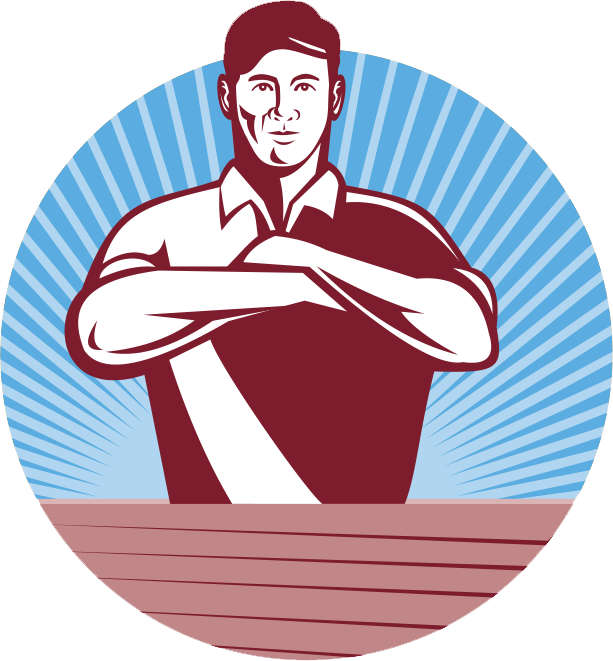
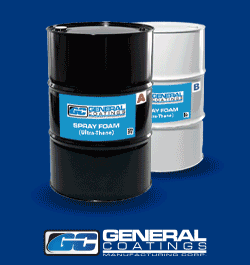










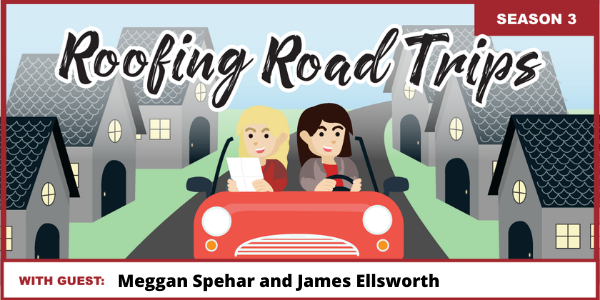

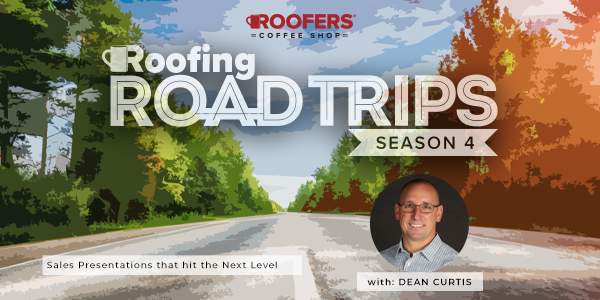

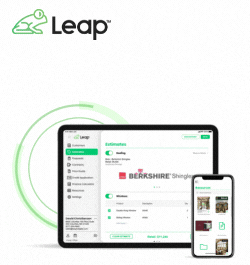
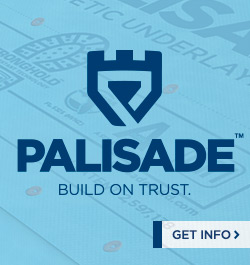

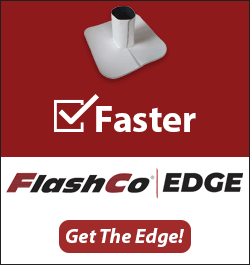

Comments
Leave a Reply
Have an account? Login to leave a comment!
Sign In